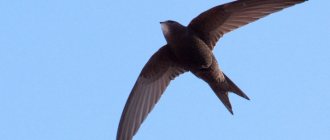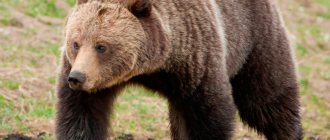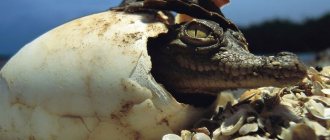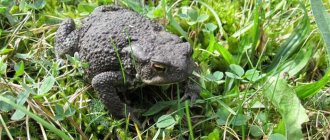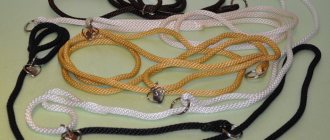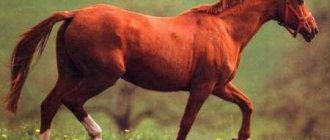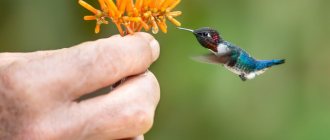The blue-winged filly lives in arid steppe regions. A characteristic feature of the species is the adaptation of body color to the color of the soil. Even at the larval stage, insects adapt to their environment. The body of fillies is stocky, females are much larger than males. This species is not prone to flying. Adults live in isolation, without leaving their usual habitats. Changes in natural conditions and recreational development of areas lead to the death of insects. The species is listed in the Red Book of the Moscow and Tula regions.
Appearance of fillies
To date, more than 3,800 species of these insects are known. There are more than six hundred species of them in Russia alone.
The grasshopper is an insect very similar to a grasshopper. She has the same arrangement of her hind legs: with the knee raised high above the body. Both fillies and grasshoppers have rigid elytra on their backs. And on the head of both types of insects there are antennae. Even the fillies chirp almost like grasshoppers, only much louder!
In fact, it is difficult for an ignorant person to determine at first glance who is in front of him. The grasshopper and the grasshopper (insect) are very similar. The photo of both only confirms this.
But nevertheless, differences exist. You just need to look closely. They are mainly due to the fact that insects lead completely different lifestyles.
Spreading
The habitat covers Siberia, Central and Southern Europe. The Siberian filly is also common in Central Asia, Mongolia, northern Kazakhstan and northeastern China.
The European population is limited to mountain ranges: the Pyrenees and Sierra de Guadarrama in the west, the Apennines, Alps, Balkans and Carpathians in the south. In most regions it is small in number and has not reproduced en masse in recent years.
The insect settles in the steppe and forest-steppe zones, preferring dry areas, rocky and well-lit areas. In the mountains it is found at altitudes up to 1200 m above sea level.
There are 8 known subspecies. The most numerous and widespread is the nominative subspecies Gs sibiricus.
Feeding fillies
On a clear, warm day, you can often scare away from the grass a flock of insects that look like grasshoppers. But we can say with confidence that these are locusts. After all, grasshoppers are predominantly nocturnal, and during the day they hide somewhere. Only with the onset of darkness do these predators go hunting.
And the filly (insect) feeds on vegetation. Therefore, there is no need for her to wait for the night. Moreover, it is worth noting that this herbivorous insect easily adapts to eating any plants: their leaves, seeds, fruits, and in some cases, stems.
Habitat
Locusts usually prefer to settle in the subtropical and tropical zones of Africa, Arabia, India and Pakistan, because their high vitality and ability to fly long distances allow them to easily survive in these arid areas and almost always find food for themselves.
The ability to overcome long distances has been scientifically proven, as desert locusts have been spotted even on the American continent, as well as in Iran and Afghanistan.
Desert locusts are distinguished by migrations of two species:
- seasonal - annual travel for the purpose of breeding from south to north Africa and back;
- invasive - one-time movement of huge flocks over many thousands of kilometers.
The wind helps the locusts on long flights, sometimes allowing them to rise in a frightening cloud up to two kilometers in height. The flock moves only during the day; at night the insects rest. During their flights, they look for wet places suitable for breeding, where they stop to mate and lay eggs. The hatched individuals, having grown a little, are already heading back to southern Africa.
Damage caused by fillies to agriculture
Many people believe that fillies are quite harmless. After all, although they belong to locusts, they are solitary insects. However, in 1939, a senior researcher at the Chelyabinsk stronghold of the All-Union Institute of Plant Protection, K. N. Filatov, compiled a report on the study of the dynamics of non-gregarious locusts, that is, fillies.
His research proved how dangerous the filly can be to agriculture. According to documentary data, in the years 1883-1892, these voracious insects regularly destroyed crops over vast areas in the Kurgan district. This was a real disaster for the peasants. And only in 1892 did people en masse go out hunting by hand. With the help of special canopies, they managed to catch 155,951 pounds of fillies!
Local historians say that in 1894, when the last insect was buried in the ground, the owner of the Balakshin molasses plant erected a monument at his own expense in honor of this event. Unfortunately, it has not survived to this day.
Meaning for humans
Agriculture
In countries where the blue-winged grasshopper population is high, it can cause significant damage to agricultural crops. In particular, in Ukraine, larvae and adults of this species can damage wheat, rye, oats, perennial grasses, corn, tobacco, poppy, essential and medicinal plants, sunflower, and woody plants in young nurseries. It is also an important agricultural pest in the Middle East.
To combat the filly, insecticides are used. One of the filly's natural enemies is the fungus Entomophaga grylli, which causes mycosis.
Security
In Russia, the species is listed in the Red Books of Moscow and the Moscow Region. It is also a rare and vulnerable species in Germany. In Switzerland and Germany it is listed in category "V" (warning list) of the Red Books, as a species that is still safe, but certain factors can lead to the threat of extinction within 10 years. However, for Bavaria, as of 2016, the species was moved to category 3 - “endangered”. An attempt to reintroduce the species into Lower Saxony failed, but between 1995 and 2016 the population was restored in the Reinacherheide nature reserve in the canton of Basel-Land in Switzerland.
Laying eggs
All articles
Fighting fillies
If you notice this harmful insect in your garden or garden, you should try to reduce the number of fillies by frequent sprinkling. High air humidity has a negative effect on their reproduction.
Treating plants with a 3% solution of Bordeaux mixture helps get rid of fillies. Feeding on plants that have been sprayed with poison, insects die within 1-3 days.
To prevent the invasion of fillies from reoccurring next year, it is necessary to mow down all the plants from the roadsides in the fall, plow the soil deeply and harrow. This will destroy the filly's eggs laid in the ground.
There is another way - to breed hedgehogs on your property. For whom fillies and other pests of gardens and vegetable gardens are a joy! At the same time, these prickly predators will destroy slugs and mice along with the fillies, if they decide to settle on the site.
Locust: reproduction and stages of development.
There are 3 stages of locust development - egg, larva, and adult. In areas with a tropical climate, locusts breed all year round, but in areas with a temperate climate only in the summer. In autumn, the female locust lays eggs in a protective capsule (bag) in fallen tree leaves or directly into the soil. One bag can contain up to 115 eggs, and the number of egg capsules per 1 m2 sometimes exceeds 2000 pieces. After the clutch has been laid, the parents die. Overwintered eggs burst, and locust larvae emerge from them, resembling adult locusts, but without wings. The development of locusts is occurring at a rapid pace. In just 40 days, after several molts, the locust larva becomes an adult insect with wings and is already capable of producing offspring. In warm regions, development occurs in just 14-16 days and occurs without a break for wintering.
Locust eggs
Sources
- https://BeetleStop.ru/kobyilka-sibirskaya/
- https://zelenyjmir.ru/sarancha/
- https://nashzeleniymir.ru/%D1%81%D0%B0%D1%80%D0%B0%D0%BD%D1%87%D0%B0
- https://fb.ru/article/264742/kobyilka—nasekomoe-semeystva-saranchovyie
- https://BeetleStop.ru/kobyilka-golubokryilaya/
- https://naturall.ru/node/88
- https://animalreader.ru/kobyilka-beskryilaya-neletayushhiy-kuznechik.html
External differences between fillies and grasshoppers
From the above it is clear why these insects should not be confused. After all, grasshoppers eat larvae and harmful insects, bringing benefits to humans. And the filly, on the contrary, is itself a pest, destroying the crop. That’s why it’s so important to know how they can be distinguished by appearance.
Compared to the grasshopper, the grasshopper is an insect with a sedentary head. Her muzzle is blunt, with powerful jaws.
It is known that grasshoppers belong to the Long-whiskered suborder, and grasshoppers belong to the Short-whiskered suborder. This is understandable. After all, the filly does not have to look for a victim with their help. She does not need to hunt for food, tracking down her prey.
The filly is an insect that has an oblong abdomen, longer than that of a grasshopper. This is due to the fact that the volume of food that she has to digest is quite large.
The front legs serve the filly only as a support, while the grasshopper uses them to catch and hold the prey. Therefore, in a herbivorous insect these limbs are weaker and shorter. The hind legs of fillies are also less developed. Therefore, its jumps are not as far as those of a grasshopper.
The females of these insects have more pronounced differences. The female grasshopper has a rather large sword-shaped ovipositor at the back. In the filly it is short and practically invisible to the human eye. She lays eggs directly in the soil.
Features of reproduction
Mating occurs a week after the females fledge. After 5-10 days they are ready to give birth. Siberian fillies choose dry areas with sparse vegetation for laying. The female lays eggs in a small hole, then fills it with a special liquid. After mixing with soil, a frozen mass is formed - a capsule. It contains whitish-gray eggs. There are 7-15 of them in a clutch. The length of the eggs is 4-5 mm, they are laid in 2-3 rows. The outlet is covered with an earthen cap. The free space is filled with fine-meshed secretion. Each female leaves 8-15 such egg capsules in the soil. The masonry is placed at a depth of 15-20 mm, but sometimes it is simply left on the surface. The breeding process lasts up to four weeks. Having completed their function of procreation, the females die. The egg stage is the longest period of locust life, it takes 7-9 months.
The larvae hatch early, in the southern regions in April, in the northern regions in May. This stage lasts about a month. The larvae go through 4 instars, their change is associated with molting. After shedding the old skin, the larvae almost double in size. They feed on succulent parts of plants or grains. Wild species are eaten completely.
Hearing organs in fillies
Not everyone knows that many insects do not hear with their ears, as is common among mammals, birds and reptiles. For example, grasshoppers use their legs for this purpose. Their hearing organs are located on the shins of the front legs.
The fillies completely hid their “ears.” Their auditory organs are located on the sides of the abdomen, in the area of the first segment.
How is a cornice formed?
A wide roof eaves are the key to safe operation and more convenient maintenance of the building. It is formed by increasing the length of the roof slope by 40-50 cm. There are 2 technologies for installing the cornice:
- Due to the use of longer rafters. The easiest way to create a wide eaves overhang is to use rafter legs for mounting the rafter frame, the length of which is 40-50 cm longer than the length of the slope. However, this option has one drawback - the frame turns out to be quite massive and expensive. In addition, if the roof slope is more than 6 meters long, then it becomes quite problematic to find lumber, the dimensions of which allow the formation of a more or less decent cornice.
- Due to the installation of fillies. To form an overhang of the required length, it is fashionable to use fillies. The roof filler is needed to increase the length of the rafters without unnecessarily weighing down the frame. They are attached to the end of the rafter leg to increase the length of the slope. The fillies can extend the cornice to any length, and this technology is cheaper, since boards of a smaller section are used, which are inexpensive.
What are fillies for rafter legs?
Sound production organs in fillies
On a hot afternoon, loud chirping can be heard in the fields and meadows. Usually people smile when they hear these sounds and say: “That’s how the grasshoppers started chattering!” But this is a wrong judgment!
Grasshoppers by nature sit quietly during the day. Therefore it is impossible to hear them. Either locusts or grasshoppers chirp in broad daylight. Moreover, only males do this. In this “musical” way they attract females. There is a second explanation for the loud chirping of male fillies. With their sounds they warn other males that the given territory is already occupied.
The fillies produce their sounds by rubbing the tubercles located on the thighs of their hind legs against the vein under the elytra.
Army ants
There are a huge number of ant species in the world, and many of them are very dangerous. These include army soldier ants, which are a specialized caste of worker ants and termites. The lack of vision only makes them more dangerous, because they attack anything that has flesh and blood - a fly, an elephant or a person. These fighters move in colonies and do not build anthills, so getting in their way will be a big deal. This type of ant has a large body, reaching 3 centimeters. They are armed with powerful, long mandibles that easily rip open flesh. Having made a hole, the ants climb into the wound and continue to destroy tissue, which causes incredible pain to the victim. They were even figuratively called “living death.” A colony of such ants could chew up an elephant in a week, and that would be a lot for a person to eat in a day.
Coloring of fillies
An interesting fact is that the color of locusts depends not on the species, but on the environment. If there is a lot of bright greenery around the growing insect, you will get a green filly. An insect that lives in the steppe, where there is less greenery but a lot of brown soil on which to move, will become gray-brown in color.
Although the lower wings of some species are brightly colored. For example, in the blue-winged and red-winged filly, in addition to the protective coloring of the elytra, there is also a method of protection from enemies.
Anticipating the approaching danger, they suddenly soar upward with noise, revealing their bright wings. And a moment later they go down again. From the outside it looks like bright fireworks.
Morphological description
The blue-winged filly (Oedipodacaerulescens) belongs to the order Orthoptera, a family of true locusts. The color of insects is yellow-brown, light and dark gray. The transverse bands on the elytra are black or brown. The head is large and wide. The eyes are large, well developed, located in the middle of the head. Insects have short, strong antennae, the length of which does not exceed half of the body. Antennas are thickened, filament-shaped.
The carina of the pronotum is interrupted by a transverse groove. The surface of the pronotum is rough. The size of the female is 22-28 mm, the males are smaller - 15-18 mm. A distinctive feature of the species is the hind wings, painted bright blue. Their length is somewhat shorter than the elytra. The apex is transparent, sometimes with several dark spots. A wide dark stripe runs along the outer edge of the wings. You can see beautiful wings during short flights of insects.
The hind limbs are significantly longer than the front and middle legs. Their lower legs are blue with a white area. The leg segment is covered with a large number of spines. The inner thighs are black. Females have a short ovipositor, the upper valves of which are notched, and the lower valves have a sharp apex and a tooth. The sound apparatus of fillies is created from the thighs of the hind limbs and elytra. Due to the special structure of their wings, male and female individuals of the species Oedipodacaerulescens produce a crackling sound during flight.
Briefly about the main thing
? art in a square: how to make a frame for a painting or photograph yourself
Installation of the rafter system is the main stage of roof construction. This is a supporting structure that receives and distributes snow and wind loads, holds the roofing in a given position, and protects the walls and foundation of the house from moisture.
The rafters include many elements, each of which performs its own task. Some serve as a frame for the perimeter of the walls, others support the rafter legs, and others connect them and keep them motionless. The result is a strong, balanced structure that is light in weight. And the load-bearing capacity is very significant.
The elements of the system can be connected in several ways, which allows you to obtain different roof designs. The choice of one form or another is made at the design stage, but, if necessary, you can change the shape and configuration of individual sections or the entire roof.
It is recommended to entrust installation to experienced specialists who can perform the assembly correctly and avoid mistakes.
Frequent mistakes when installing a rafter system
Before installing the rafter system, you need to have an understanding of the most common mistakes when constructing a roof, since they spoil the appearance of the house, reduce the load-bearing capacity of the main elements, and, consequently, the safety of the structure.
Video: mistakes and miscalculations when installing attic roof rafters
The most famous mistakes in the construction of rafter structures:
- In order to move freely in the under-roof space, long sections of finished ties of impeccably made trusses are often cut out in the middle. Because of this, the supporting frame becomes shaky, since the cut ties do not interfere with the divergence of the structure. As a result of spreading, cracks may appear in the ceilings, and if they are not repaired in time, the rafter system will simply collapse. To eliminate the negative consequences, it is necessary to replace the areas cut out due to ignorance with strip steel in order to restore the ability of the tightening to continue working in tension.
- A serious mistake is the weak attachment of the Mauerlat to the armored belt. If the mauerlat beam is carelessly not “tightly” reinforced with anchor bolts, then under the pressure of the inclined rafters it will tip over and take the entire roof with it.
- Neglecting to form a reinforced concrete stiffening belt on the intermediate load-bearing wall will cause the floor beams to begin to sag and the roof to move apart.
- To prevent the racks from pushing through the floors, spacers with a length of at least 1.8 m must be placed under them. Installing short spacers will lead to the fact that the racks will begin to transfer the load not to the beam floors, but to the flooring, as a result of which the floors are deformed.
- Incorrect calculation of the rafter structure or choice of poor quality wood, which causes deflections. Subsequently, correcting such an error is very difficult and financially expensive. You will have to unload the rafter structure in the damaged area, lift it with a jack and install wooden posts under the bent rafters, and then drive wedges between the post and the cross beam and reinforce the leveled rafters with overlays.
- When installing skylights or cladding gables, pine boards “into tongue” are often placed with the groove facing up for ease of assembly, which is absolutely not allowed. With this installation, moisture will begin to seep into the seams, which will have a destructive effect on the elements of the rafter structure.
- Uncorrected geometry of walls and slopes, lack of a wind beam, incorrect support of the extensions and incorrectly executed struts, which provide structural rigidity and redistribute loads.
Video: how to avoid mistakes when arranging a rafter frame
This article discusses the key elements and features of the rafter frame. But this is a small introductory part. To take into account all the nuances during installation, contact experienced builders and competent designers. Then all roofing elements will comply with the standards, and the roof will become a reliable, extremely attractive and stylish calling card of the house. Good luck to you.
Selecting the material
If you decide in favor of installing fillies, it is necessary to perform a high-quality calculation of the length of future parts. It is better to carry out the work after installing the main roof rafter system. When calculating the length of the parts, do not forget to take into account the overlap on the frame ribs, which is 30-55 cm.
After this, we select the material for work. If boards with a section of 50x150 are used for rafters, the fillies can be made from boards 120x40 or even 100x30. Mostly softwood lumber is used in the work. Make sure that its humidity is no higher than 8-10%. In addition, the absence of falling knots and rot in the fillies is mandatory.
Parts selected and sawn to the required length must be treated with antiseptic compounds that prevent the formation of fungi and mold. Despite the fact that the filler is working under the roofing deck, the humidity of the surrounding air can have a negative effect on the material. It would also be a good idea to impregnate the wood with fire retardants.
Installation of eaves overhang ↑
What is a woodlice and what does the insect look like in the photo?
As already noted, hemming the roof eaves using an additional horizontal element, a filly, is a more complex and time-consuming option. In general terms, installation work proceeds as follows.
Boards with a cross-section of 100 or 150 by 30 are used as a structural element. They can be replaced with scraps of beams for rafters.
When building up rafter legs, the wide plane of the element should lie horizontally, that is, at a right angle to the surface of the wall. In this case, they usually focus on the brickwork or building level readings.
The next step is to attach hemming boards to the fillies.
Taking into account the above, the lower plane of the resulting box will be located horizontally.
All that remains is to decorate or decorate the box. There are no ready-made recipes here - everything will depend on the style of the house, as well as the personal preferences of the owners.
When installing a cornice, it is important to pay attention to the fact that it should not interfere with the roof “breathing”, that is, nothing should prevent air from entering and passing through the under-eaves part into the under-roof space, and then through the roof covering to the outside. This is the key to effective ventilation, thanks to which all elements of the roof structure remain dry, and the roof lasts much longer.
Important For this reason, it is unacceptable to use sealants such as polyurethane foam or silicone during installation work, with the exception of pipe processing.
karnizy-s-kobylkami-1 karnizy-s-kobylkami-2
Hemmed cornices using fillies come in different types. Let us examine in more detail the structure of the simplest of them - the usual triangular one.
Note: A remote cornice of this type is not only simple, but has another important advantage - unlike other options, it does not hum, creating an unpleasant noise when a winter blizzard is raging outside.
Installation is carried out following the following simple rules.
- The rafters are cut flush with the level of the external walls, and the eaves should not hang over the wall. For cases when it does hang over the joint formed at the junction of the walls with the rafters, a cornice board is nailed along which the drain will pass.
- The removal of the cornice is provided by fillies that are nailed directly to the rafter legs. The rafters are thus lengthened. This method is quite popular and here's why. Among the many advantages of this approach, we first note the complete protection of the space formed under the eaves - rainwater is guaranteed not to get there even in strong winds. However, through the gap formed by the fillies, a sufficient volume of air will penetrate into the under-roof space to ensure ventilation of the roof.
- At the bottom, the eaves overhang can be left open or closed using jointed or simply planed hemming boards of equal width. Their maximum thickness is 25 mm. The boards are installed perpendicular to the wall, maintaining a ventilation gap between them.
- If the eaves extension exceeds the distance for installing a wooden filly, then it is mounted on consoles, which are embedded in the wall using metal anchors. In these areas, the structural elements are embedded in line with the console.
- Overhangs on walls built of stone, the upper edge of which is lined with brick, are also made of brick. It should be noted that the width of the overhang cannot exceed 50% of the wall thickness. When installing an overhang, the rows are allowed step by step by no more than a third of the length of the brick, but no more than 8 cm.
https://youtube.com/watch?v=VIX7ZJfWuBw%3F
2021 stylekrov.ru
